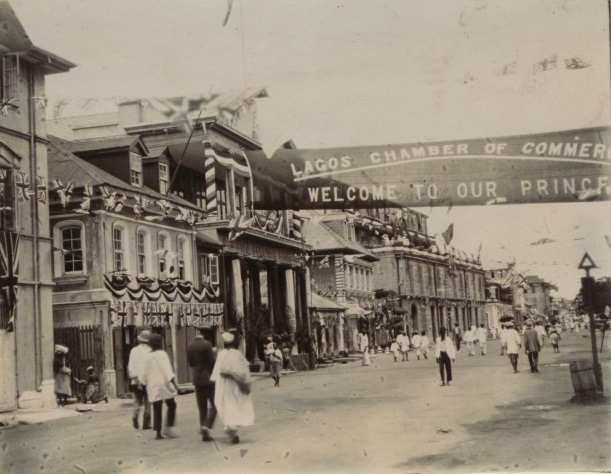[Image: Lagos street scene, ca. 1910. The National Archives CO 1069-65-22. Courtesy of Wikimedia Commons]
Download PDF: Nigeria, in two parts
Part One: Managing Political Reform, 1943-1954 [2MB]
Part Two: Moving to Independence, 1953-1960 [3MB]
Volume Details: Series B Volume 7. First published by The Stationary Office in 2001. Electronic version reproduced with permission of the editor under an Open Government Licence.
Editor Details: MARTIN LYNN was Reader in Modern History at Queen’s University, Belfast. He was the author of Commerce and Economic Change in West Africa (1997) and of numerous articles on British economic and political relations with nineteenth century West Africa.
Selection from Introduction:
“With a population of some 31 million in the early 1950s, Nigeria was, following the independence of India and Pakistan, Britain’s largest dependency. One in three of the inhabitants of the British empire in this period lived in Nigeria; each of the Nigerian regions created in 1951 had a population larger than any other British overseas possession, with the exception of Tanganyika. The political importance of Nigeria for Britain’s standing in the world in the 1950s was considerable; as the largest state in tropical Africa Nigeria’s potential leadership role clearly would be central to Britain’s relations with the continent once independence had been achieved. Yet the potential for disaster in Nigeria was also immense, given the threats of secession that were voiced by different groups in these years and given the ethnic tensions that later were to explode so tragically in 1966. The importance of the Anglo-Nigerian relationship in this period and of the handling of the process of political withdrawal that reached its culmination on 1 October 1960 can hardly be gainsaid therefore.” (Part One, p.xxxv)

